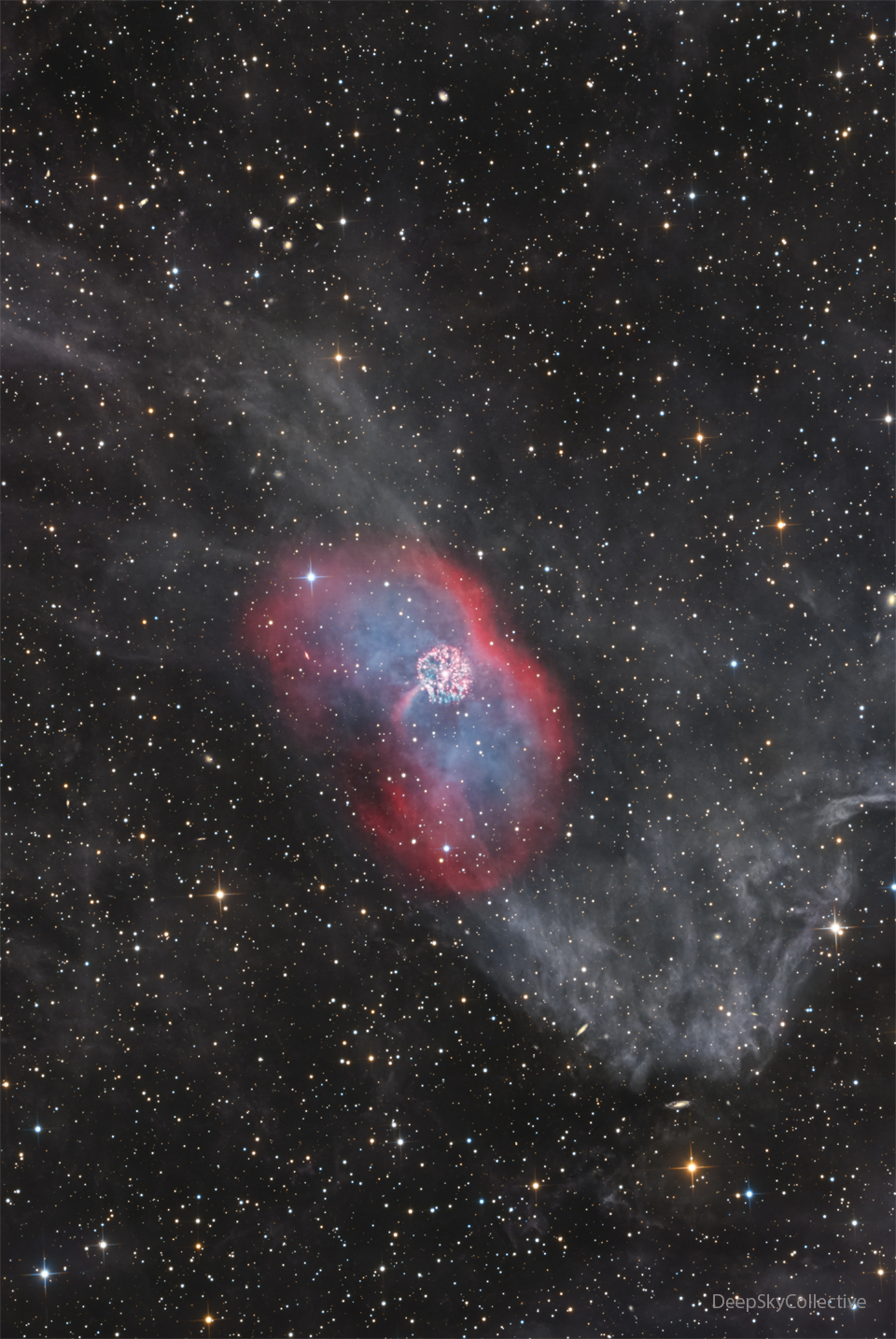2024年4月30日
GK Per: Nova and Planetary Nebula
Image Credit & Copyright: Deep Sky Collective
Explanation: The star system GK Per is known to be associated with only two of the three nebulas pictured. At 1500 light years distant, Nova Persei 1901 (GK Persei) was the second closest nova yet recorded. At the very center is a white dwarf star, the surviving core of a former Sun-like star. It is surrounded by the circular Firework nebula, gas that was ejected by a thermonuclear explosion on the white dwarf’s surface — a nova — as recorded in 1901. The red glowing gas surrounding the Firework nebula is the atmosphere that used to surround the central star. This gas was expelled before the nova and appears as a diffuse planetary nebula. The faint gray gas running across is interstellar cirrus that seems to be just passing through coincidently. In 1901, GK Per’s nova became brighter than Betelgeuse. Similarly, star system T CrB is expected to erupt in a nova later this year, but we don’t know exactly when nor how bright it will become.
Tomorrow’s picture: sky fish
英仙GK: 新星与行星状星云
影像提供与版权: Deep Sky Collective
说明: 在这幅影像里,恒星系统英仙GK只和3个星云的其中之2有关联。在迄今已知的新星之中,距离1500光年远的英仙新星1901是第二近的新星。其中心藏着一颗白矮星,为一颗曾经的类太阳恒星残存的核心。环拱在英仙GK四周的圆形烟火星云,是在1901年看到的、发生在白矮星表面的一例热核爆炸(新星)所抛出的气体。烟火星云周围的红色发光气体,是曾披覆着此中心星的大气。这些形成弥漫行星状星云的气体,则在新星爆发前就已被释出。此外,飘过视野的暗淡灰色气体,应是恰好路过的星际卷云。在1901年,英仙GK发生新星爆发变得比参宿四还要明亮。在今年晚些时候,恒星系统北冕T预期也会发生新星爆发,不过具体的时间及亮度皆难以确定。
明日的图片: sky lion








One Comment